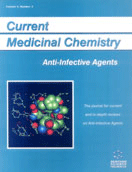Abstract
The use of antibacterial antibiotics in therapy represents a huge selection pressure for bacteria leading to increasing levels of resistance to these agents. A more controlled usage of these drugs may be a way to partially counterbalance this bacterial evolution. However, the design of new agents active against resistant organisms remains of critical importance. 6-Fluorinated quinolones, like Ciprofloxacin, represent a very significant improvement over the first generation quinolones (e.g. nalidixic acid) in terms of potency, spectrum and pharmacodynamic properties. Unfortunately, once introduced in clinic, these agents faced a rapid emergence of resistance from gram-positive organisms. The subsequent efforts to improve the fluoroquinolones gram-positive spectrum were significantly hindered by the parallel existing between the fluoroquinolones gram-positive potency and their genotoxicity. Challenging the 6-fluorine dogma, it was found that by selecting the proper set of substituents at 1, 8 and 7 positions, broad-spectrum quinolones of very high gram-positive potency could be obtained. The potential of this non-fluorinated series became clearer when two independent reports showed that non-fluorinated quinolones were consistently less genotoxic than their 6-fluorinated counterparts. Additionally, the unique structure-activity relationships of 6-hydroquinolones and the finding of previously unreported resistance mutations induced by these agents are indications that these analogs may not interact with their target, the type II bacterial topoisomerases, in a way similar to typical fluoroquinolones. This set of unique properties makes the 6-hydroquinolones or Non-fluorinated Quinolones (NFQs) a very appealing platform from which new broad-spectrum agents with better potency against gram-positive pathogens can be identified.
Keywords: non-fluorinated quinolones, nfqs, ciprofloxacin, nalidixic acid, fluoroquinolones
 15
15

